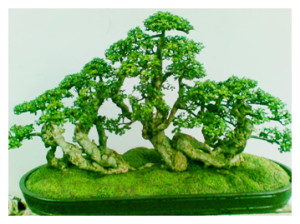There are many important decisions to make when you decide to grow a bonsai tree. First you must know which specie you would like to plant. Remember, any tree can be grown as a bonsai but you must know which kind would adapt better to the weather and environment that surrounds your home. That’s why many experts recommend choosing seeds or trees that grow near your house.
There are also many bonsai styles. These do not rely entirely on the specie of the miniature tree although you may have some considerations. You do not want to fight constantly against his original shape and change it drastically, especially if you’re a beginner. However, as you gain experience you’ll be able to focus more and more on the silhouette of your tree.
A single miniature tree can show many styles, some are practical, others just aesthetic. The most important are:
Formal Upright Bonsai
Also known as Chokkan, these trees are the ones that have an upright and straight trunk. Its branches are thicker and long as they get close to the ground and shorter and small on the top. Formal Upright trees have strong and noticeable roots, which sometimes are seen above the soil.
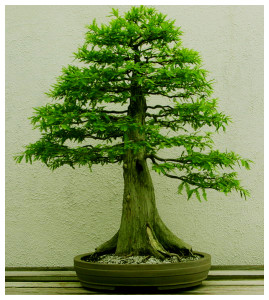
Informal Upright Bonsai
Also known as Moyogi, these trees have an upright trunk but have noticeable curbs, sometimes with the shape of a letter “s”. In every twirl branches appear, usually smaller at the top and bigger near de soil. The trunk is also thicker in the soil.
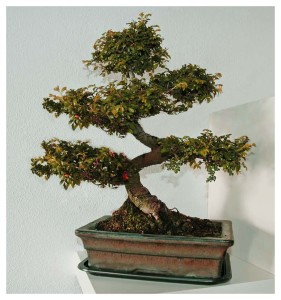
Slanting Bonsai
Also known as Shakan, is mostly a Formal Upright tree but with a small lean. Its trunk usually grows in one direction with an angle between 60 to 80 degrees to the ground.

Broom Bonsai
Called Hokidachi in japanese, Broom trees have a straight trunk that doesn’t finish at the top of the tree but around the middle. After that, branches, all about the same size, form a ball-shaped crown. Broom trees can also be formal and informal, like the Upright tree, depending on the curves of the trunk.
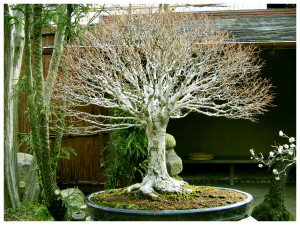
Cascade Bonsai
Also known as Kengai, Cascade trees are the ones that grow downward, below the base of the pot containing it. The trunk can be upright for a small part and then downward. There’s also a Semi Cascade style, called Han-kengai, in which the peak of the tree reach at the level, or just beneath, the containing pot.

Windswept Bonsai
Windswept miniature trees, or Fukinagashi, are the ones that look like have been affected by strong and constant winds. In this style the branches grow in one direction only.
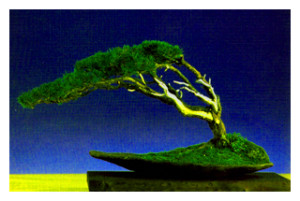
Literati Bonsai
Literati trees, or Bunjingi, are the ones that have a long trunk, usually with curves, with a few small branches at the apex. The idea behind this tree is to show his struggle to survive in hard conditions.
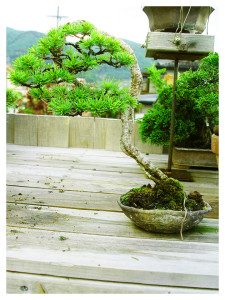
Multi-Trunk Bonsai
There are miniature trees that have multiple trunks: From the Sokan tree, with two, to the Kyukan, that has nine. All trunks are supposed to grow from the same root system. Usually the strongest trunk is the highest.
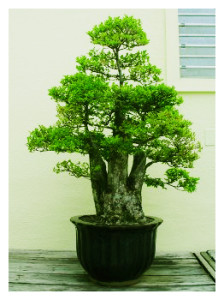
Forest
Also known as Yose-ue, this style consists on planting many trees in the same pot. It’s like the Multi-Trunk style but they don’t rely on the same root system; they are all different trees. Most miniature forests are formed by the same specie. The trees are usually of many sizes and are not planted in a straight line but in a spread out pattern.
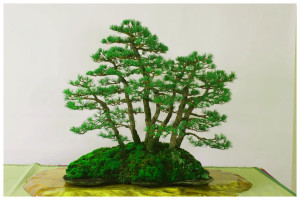
Driftwood
In Japanese known as Sharamiki, is a miniature tree with an important part of its trunk barkless and filled with deadwood. A small strip of live trunk has to connect the leaves and living branches to the roots to carry nutrients. Driftwood trees look old and aged.
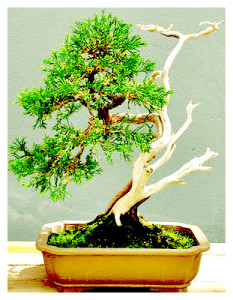
Clinging-to-a-Rock Bonsai
This style, also known as Ishitsuki, consists of a miniature tree that grows in the cracks and holes of a rock placed in the containing pot. There’s also Root-Over-Rock trees, or Sekijoju, which consist of the same principle, only that in this case the root surrounds the rock in which the tree grows ending in the soil.
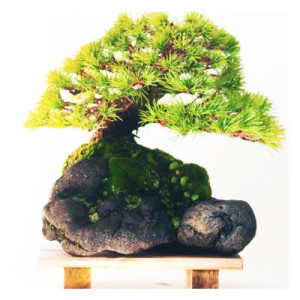
Raft Bonsai
In nature, when a tree falls but its branches still pointing upwards there’s a big chance they’ll survive. After some time roots will grow and they’ll start feeding these new trees that will born out of the branches. Sometimes these roots will bury parts of the old trunk. However, all trees that were born in the process will be in the line of the original trunk. This style emulates that procedure in a miniature scale.
